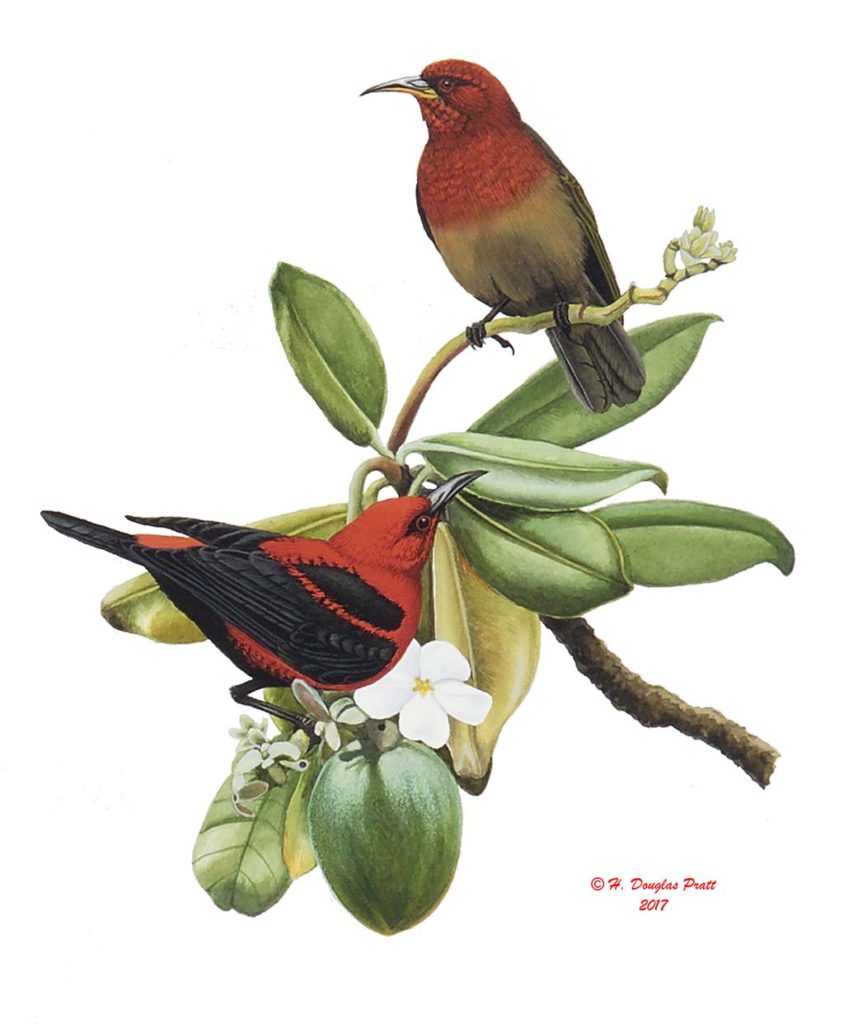Égigi: Not seen in the wild on Guam since 1986

Scientific Name: Myzomela rubrata saffordi (Family MELIPHAGIDAE)
Common Name: Micronesian Honeyeater
CHamoru Name: Égigi
Audio sample of the Égigi
Habitat and Natural History: The Micronesian Honeyeater can be found in most forests edges and flowering trees in urban areas near homes and commercial buildings. It feeds on flower nectar and insects. It may be a pollinator of the flowers it feeds on. Small cup-shaped nests made of grass, roots, and ironwood ”needles” glued together with spider webs are constructed annually. A pair produces two off white brown spotted eggs. Micronesian Honeyeaters are territorial.
Description: Honeyeaters are about five inches or 13 centimeters long. They have a long down curved bill with a four part brush tipped tongue, which they use like a drinking straw to suck up nectar. Males and females differ in color. Males are bright scarlet red with black intermingled above and on the breast with black wings, tail and belly. Females have duller versions of the same color pattern. Colors vary within their range.
Range: The Micronesian Honeyeater is common throughout Micronesia. Six subspecies exist separately occurring on Palau; Yap; Guam and the larger islands of the Northern Marianas; Ponphei; and Kosrae.
Current Status: Although once common on Guam the endemic subspecies has been extirpated from the island where it was last seen in the wild in 1986. There are currently no égigi in the wild on Guam. They are still found in the wild in the CNMI.
Threats: The major threats are habitat destruction and predation by the brown treesnake.
Where to see it: You can visit the égigi at the Guam Zoological, Botanical, and Marine Garden, also known as Cushing Zoo.
